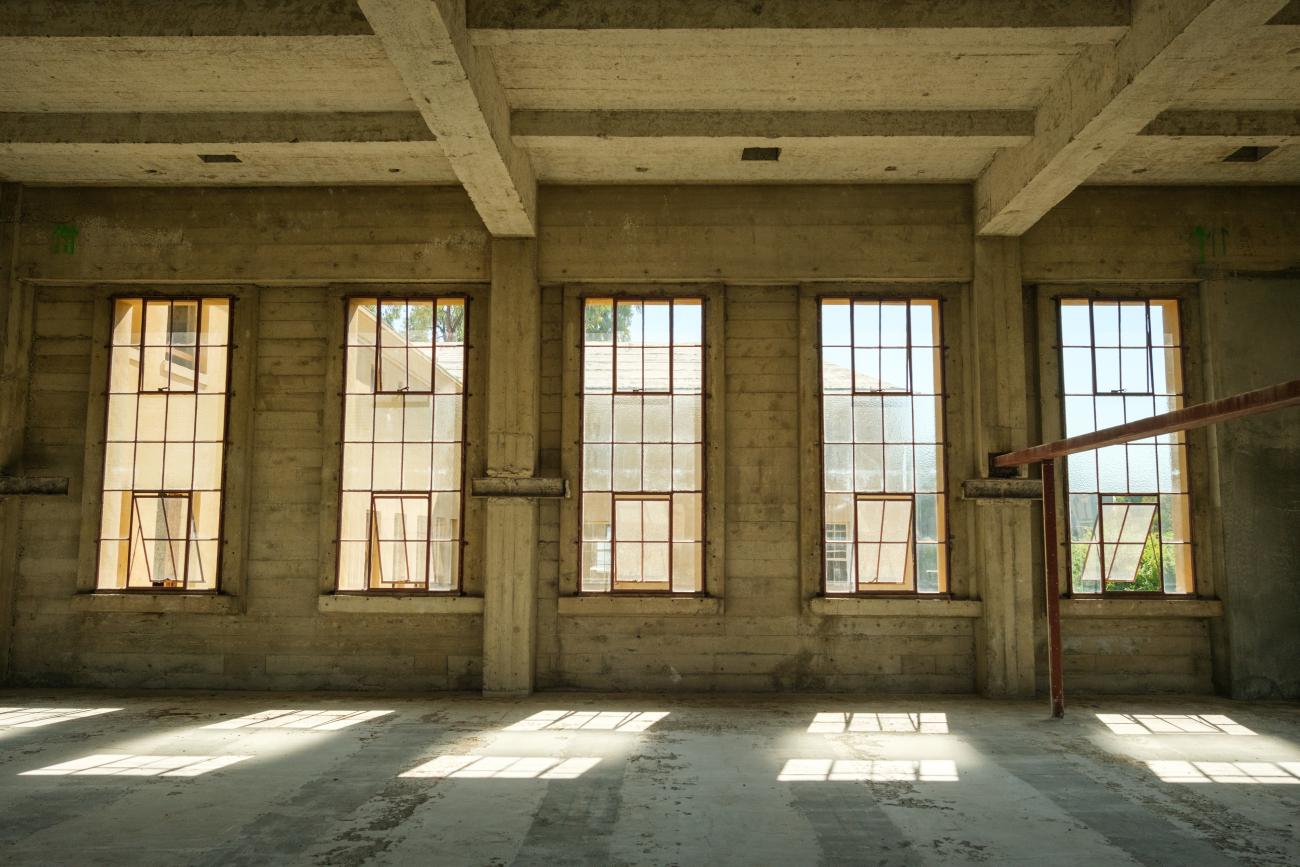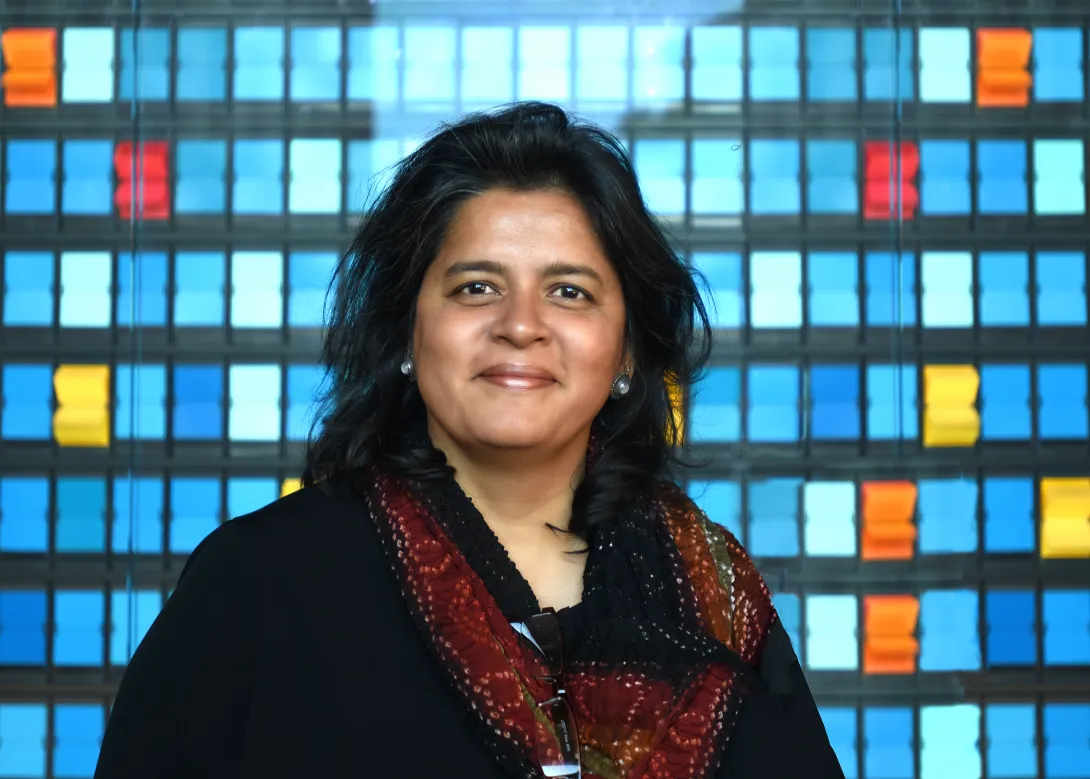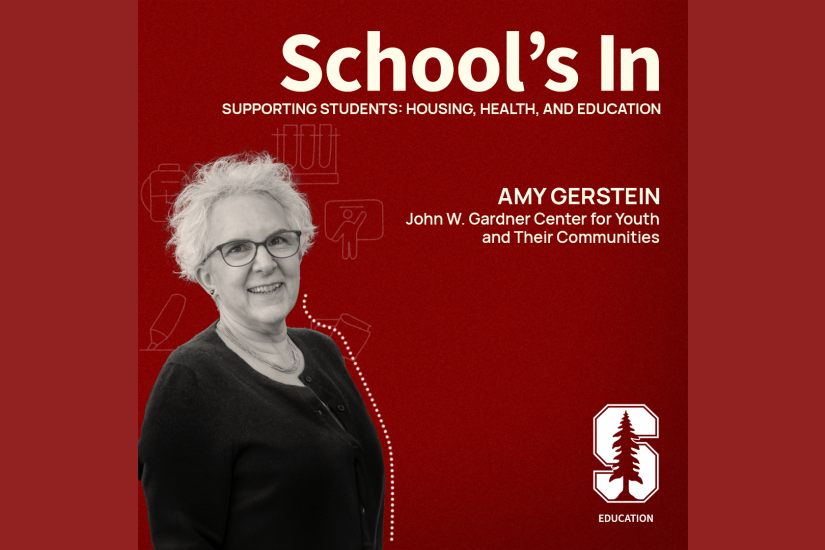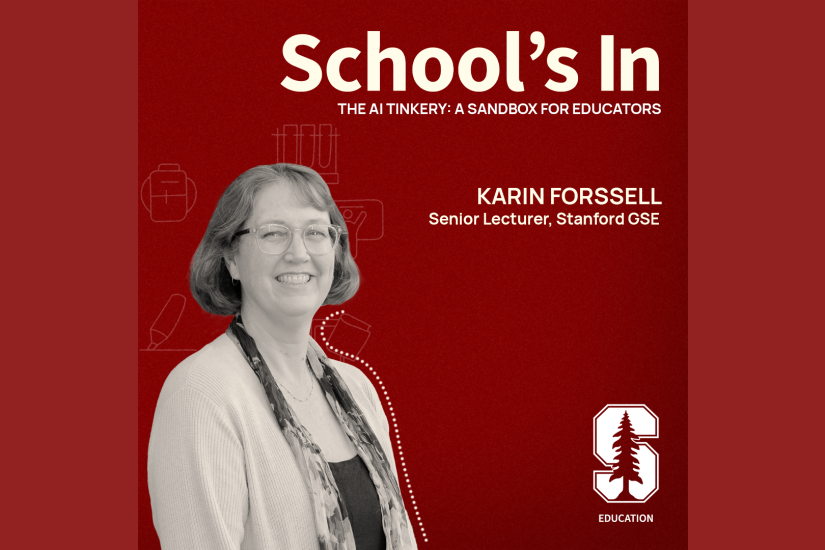
How architects of the GSE’s new campus are preserving the past while building toward the future
Continuity. Character. Community.
These are the core concepts that architects had in mind when designing the future look and feel of Stanford Graduate School of Education (GSE).
The project, scheduled to be completed by fall 2025, includes the preservation and restoration of the GSE’s education building (also known as the north building) and the Barnum Center; the construction of a new south building adjacent to Barnum Center; and a new courtyard that will connect the three structures.
“The idea was to enhance what was already good about the buildings, while making the space relevant for the future,” said Sapna Marfatia, Stanford’s director of architecture, who specializes in historic preservation.
Here, Marfatia discusses how the team behind the GSE building project pursued the task of developing a space that would reflect both the past and the school’s vision for the future.

Sapna Marfatia is the director of architecture at Stanford. (Photo: Sunny Scott)
What existing structures are going to be preserved through this project?
There are two buildings that are being preserved as part of this project. One, the existing Barnum Center located on Lasuen Mall, is the older of the two buildings. The second building being preserved is what we call the north building, which is the original GSE building, called Cubberley in the past.
To maintain the original features of the north building, which was built in 1938 by Architect Bakewell & Brown, the exterior is going to be preserved, the beautiful wood and steel windows are going to be restored, and damaged sandstone walls on the front facade will be conserved and carefully cleaned. There are also columns that have been encased in plywood for preservation, and red tile flooring in the original lobby that’s also going to be preserved.
Several of the building’s elements were identified as character-defining features, as they have retained their historical significance. The exterior stonework and cement plaster, the steel and wood windows, the coffered ceilings and red tile flooring in the lobby all represent the signature craftsmanship and aesthetic developed by Bakewell & Brown for the Stanford Campus.
Why is preservation such a key part of the process?
By preserving the building, we are rebuilding in a way that’s sustainable. We’re not using up as many new resources, and the construction industry is known for doing just the opposite. By just saving the building and repurposing it, it’s automatically a great thing in terms of reducing our carbon footprint.
The second benefit of these preservations is that it creates a connection over time. When we do this preservation work, we identify those character-defining features that make the space authentic and try to keep those things alive.
There have been many students who have witnessed the existing buildings; the GSE has been there for a very long time. So for people who identify with the school, it is good to create that continuity in memory.
What are some of the major changes being made to the existing buildings?
One big change is removing the auditorium in the north building. The idea behind this adjustment was to make a large convening space, where it would be possible to create more of a vibrant community with visual connections across various floors.
The old auditorium was detrimental to creating community because, on days when there were no events, it was this big, dark and empty space in the center. By removing what wasn’t working and replacing it with a multistory forum, GSE students will have new opportunities to meet.
Furthermore, the corridors surrounding the old auditorium used to be dark, but with the new design, one wall will be completely made of glass, allowing light to penetrate deep into the building.
A large new courtyard shared by the three buildings will serve as a comfortable outdoor gathering space with a well-balanced mix of shaded and sunny areas for seating. A trellis located in the north building’s south courtyard will provide shaded dappled light, and the south building’s north courtyard will be shaded naturally by the building’s shadow.
What part of the project are you most looking forward to?
There are many parts that I’m excited about and eager to see completed. The Barnum Center is intriguing: It was built around 1906 and served as Stanford’s original bookstore until the bookstore function was moved to its current location opposite Old Union in 1960. The building was vacated and eventually became the Barnum Center, with several additions attached to it over time.
As part of the GSE project, all the additions that detracted from the original will be removed, and the original building will once again become a freestanding structure. I think of the building as a beautiful punctuation along the formal part of Lasuen Mall just before you enter White Plaza to the north and Meyer Green to the east.
I’m also excited to see the new glass facade on the north building and the courtyard between the buildings, because I think it’s going to be transformational.
The GSE’s location was the most exciting part about this project. It’s in a part of campus where everything comes together. The Main Quad, Green Library, Hoover Tower, Meyer Green, and White Plaza will be simultaneously visible from the new GSE courtyard. We’ve enjoyed figuring out how we could make the complex both beautiful and understated, so that it fits nicely with the rest of campus.



